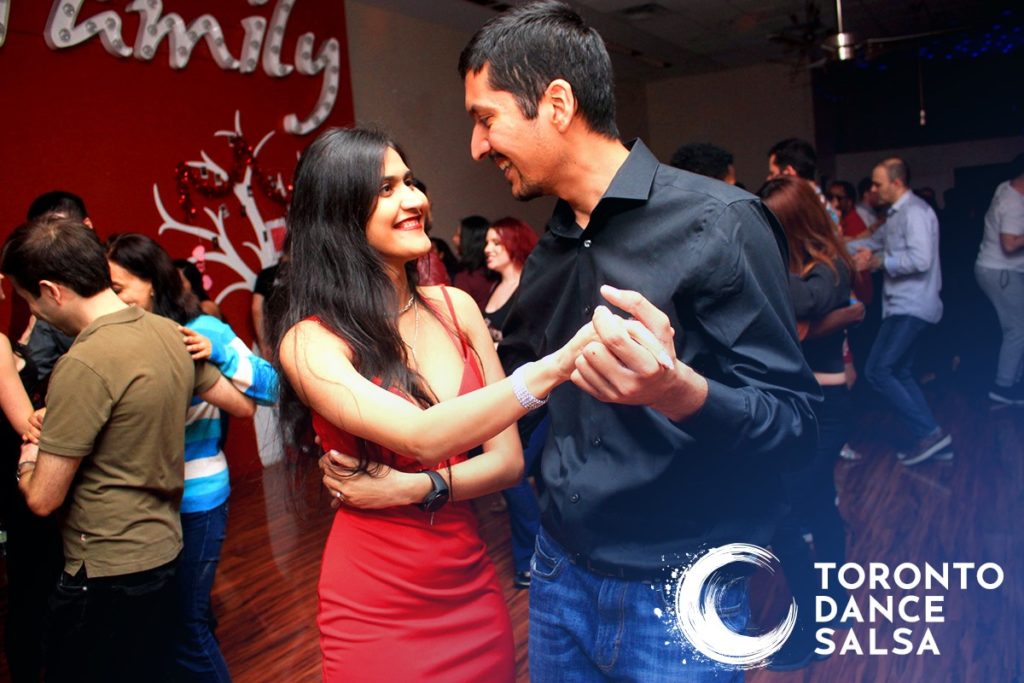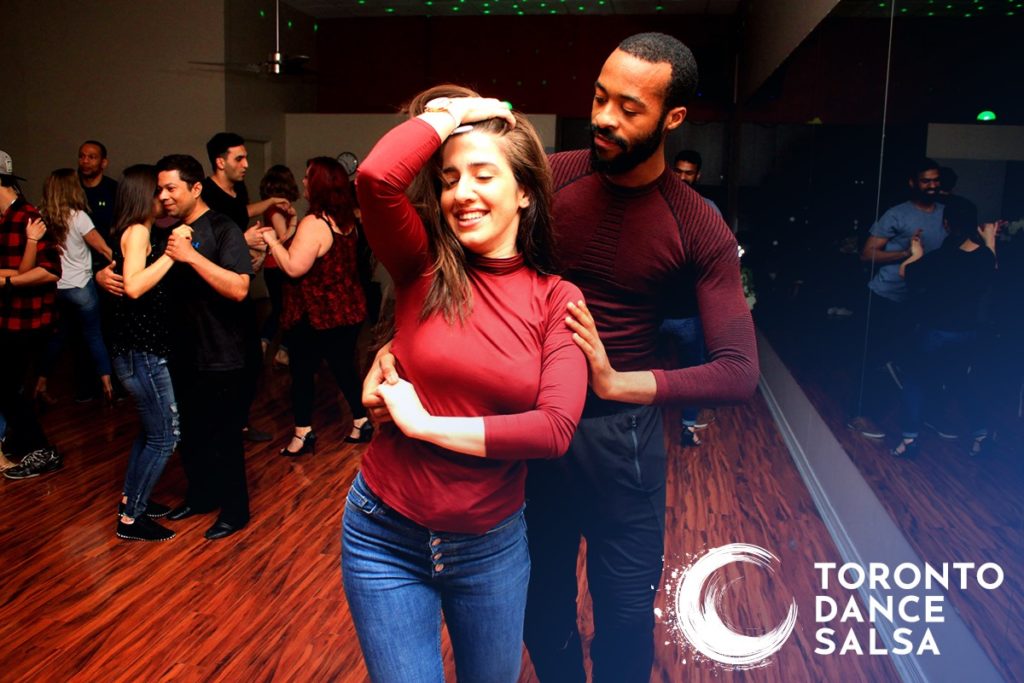Disclaimer: When you think of professional dancers, you’d think they are the best dancers in the world, which is not true. I’m a professional dancer, and there are a lot of amateur dancers who are better than me.
A professional dancer is a dancer who could get paid for what they do because there is a recognition of his skill level, energy and professionalism. However, some excellent dancers are not professionals.
How do you dance like a top-level Bachata dancer? Here are some tricks I’ve picked up after many years of dancing and practicing and refinding my trade. If you practice and apply them daily, you will be unstoppable, and I will look forward to dancing with you, whether leading you or following you in Bachata.
Tip #1: Ball of the foot through the heel.
What I want you to imagine is you’re putting on shoes that are half a size, too small, where your heel is struggling to get, and you have to put that pressure in.
That’s what every pro knows about weight transfer. When you are dancing, you’re not dancing with your weight, sitting on the ball of your feet to the toes. But instead, the ball of your feet to the heel. Think of it as skating. You’d never slide on your toes because you fall flat on your face.
It is the same thing with dancing, and honestly, this tip applies to Kizomba, or Salsa and many other dance styles. The easiest way to hack this: As you bring your feet together, you bend your knees slightly, you pull your pelvic bone back. So your pelvic bone points to your heel; where you can imagine is your butt is resting on a low bar stool. From here, I want you to pull your chest back so that your weight is sitting about 70% on your heels, and the rest of it is forward into the ball of your foot. And as your dance, you want to be dancing in an upright position. So you want a small center of gravity as you’re moving and floating and flowing on the dance floor.
Tip #2: Ribcage training.
There are many videos on YouTube for ribcage training, but every pro knows that first, you need to learn to isolate your upper body and lower body.
I encourage you to look at Daniel and Desiree or any other famous Bachata dancer, and you will see as if their upper and lower bodies are just two separate beings that can move on their own.
The easiest way to train your rib cage to be looser and more flexible is to sit down in a chair. Place your hands on your lap and then slowly isolate by pulling your chest to the right and then gradually to the left making sure that your hips don’t move anywhere.
So you go left and right and left then right, followed by you trying to move your ribcage by bringing your chest forward, and then you concave it in and just doing this isolation, you will learn to loosen yourself.
Think of it as if you were an old-school joystick that can only go forward and back left and right.
Most people, including most dancers, are super tight in the upper body. Especially if we have a job that requires us to work in front of a computer, we become stiff, which is unnatural because our bodies should be flexible. So practicing progressive and mild isolation moves will help you stretch, which is excellent for dancing and general health. By stretching out your ribcage, you get more comfortable and aware of what’s happening with your upper body. And then you don’t just have one instrument in your lower body, but you have two when you’re dancing, Bachata.
Always use good judgment and follow your doctor’s advice if you have any sort of mobility issue.
Tip #3: Musicality.
When you look at the top dancers in Bachata, they are not just making dance moves, they are not just in the correct weight transfer, but they are playing the instruments. They are playing with the singers. The simplest way to put it is to listen to one of your favourite songs and because, you know, the song you can jam out to it, and if you just let yourself synchronize to the music, you tend to flow to the lyrics. You’ll tend to flow to the instruments; you tend to flow when the music drops or picks up; that’s what musicality is.
Musicality is a little bit harder to train in. However, we do have a whole special course, in our school called Bachata level, three musicality where I break down Dominican style, Modern style, Sensual style, Remix styles of Bachata and teach how to be musical about it.
Another way to do it is as you’re going out, social dancing, try listening to the music as you’re dancing with your partner and seeing if you can just be a little more playful with your partner as you flow through the music.
Tip #4: Study under a pro.
It seems obvious, but sometimes we struggle without asking out for help. You don’t have to learn alone. I always believe that if you feel stuck, it’s because you don’t have anybody around you who’s better at what you want to get good at. So go to schools, go to our school, go to any school where great dancers are, and study them.
The limit of your growth always depends on the kind of people you surround yourself with.
For example, a professional dancer will open up more doors for you. They will transfer their experience and share their knowledge, saving you time and frustration. So I can’t stress this enough to study under a professional dancer.
But if you don’t have anyone you can study by watching YouTube videos of pros.
Tip #5: Watch YouTube videos of pros.
Look up Daniel and Desiree and watch them dance, but don’t just watch them dance. An excellent hack on YouTube is if you click the gear icon, you can slow down the moves to have the speed or three-quarters of a speed. I would do this when I was a student, and honestly, I still do it. I slow down the movements, and I pick a 15 to 20-second chunk of a combination or isolation that I like. And then I count it off. I try to break down the little nuances, and then I practice at home over and over and over again.
I’m a firm believer in monkey see, a monkey can do through repetition, so this has been my hack because I don’t have Daniel Desiree next to me. I live in Canada, but I have these wonderful dancers right at my home, thanks to YouTube and access to the internet.
If you want to improve, take notes, record yourself, measure your progress. Think of it as a science—the science of dance. I can give so many more tips, and I can’t wait to meet you on our dance floor to share these tips and demonstrate these tips because sometimes it’s hard to manage them as you’re reading them.
But all in all, just take the pressure off of you. Remember being a professional it’s nothing special. It just meant that someone decided to dedicate themselves to this craft, and a pro is simply a human being who gets paid. So just focus on you being the best version of yourself. I’m sure you can be a pro at that.
I can’t wait to welcome you to our big family, have you coming in week to week, having fun, connecting with new friends and letting lose to amazing Latin songs. Click here to check our current schedule.
If you have any questions you would like me to answer here are some ways you can contact me: message me on Instagram (torontodanceSalsa), on Twitter (#torontodanceSalsa), on Facebook (Toronto Dance Salsa) or email me at [email protected].


